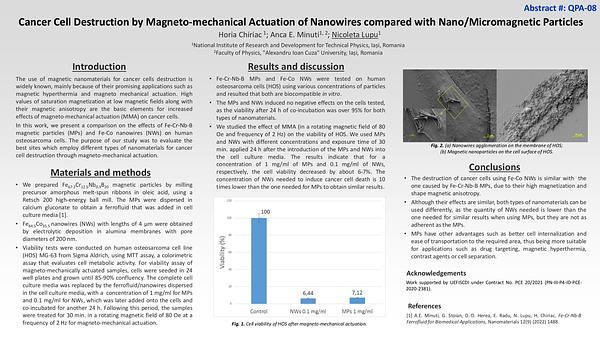Would you like to see your presentation here, made available to a global audience of researchers?
Add your own presentation or have us affordably record your next conference.
Maintenance of homoeostasis in human body is a very important indicator in all cell activities. Persistent acid-base imbalance leads to diseases such as metabolic and
respiratory acidosis or alkalosis. When exposed to a disease, various immune cells are activated due to the inflammatory response, and particularly T cells play a role in inducing apoptosis
of mutated cells such as tumor cells. When the activity of T cells is very low, infection by external invasion is easy, and on the contrary, excessive activation lead to chronic inflammation
caused by autoimmune diseases. Many clinical studies related to pulsed magnetic field (PMF) demonstrated its efficacy in reducing pain, improving blood circulation, as well as blood's
acid-base balance.1-2 Therefore, our study has tried to investigate the influence of PMF on the regulation of acid-base homeostasis in EL4 cells, which are T cells formed through
lymphoma generated by inducing 9,10-dimethyl-1,2-benzanthrance to C57BL mice. In addition, we tried to explain the role of PMF on immune cell activity by measuring the level of proinflammatory
cytokines such as TNF-α and INF-γ in culture supernatants. EL4 cells were cultured in a DMEM medium supplemented with 10% FBS and 1% penicillin at a concentration
of 5.5 × 104 cells/ml in an incubator at 37 °C and 5% CO2 condition. Our PMF stimulator has the maximum intensity of 4700G at a transition time of 222 μs with pulse intervals of 1Hz.
The homoeostasis in pH was improved as the intensity of PMF increases.(Fig.1) Cell viability decreased by 32% after PMF stimulus of 4700G. It was observed that the concentration of
TNF-α and INF-γ, a cytokine related to inflammation, also decreased as the strength of PMF increased. These results suggest that PMF stimulus improves the anti-inflammatory effect,
therefore, it is thought to affect the immune system of the human body by balancing the activation and suppression of immune cells. For clinical use, our study might suggest non-invasive
PMF can be developed as a medical devices modulating immune system, although it is necessary to optimize the PMF conditions such as pulse shape, duration, or repetition rate.
References:
1 N. M. Shupak, F. S. Prato & A. W. Thomas, Neurosci. Lett. Vol. 363, p.157–162(2004).
2 S. Bang & H. Lee, AIP Advances, 11(1), 015242(2021).

